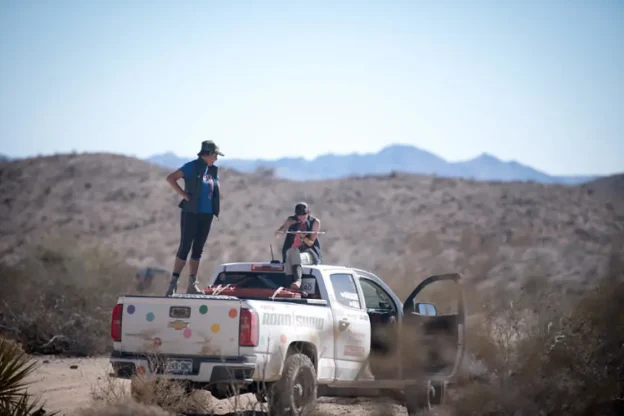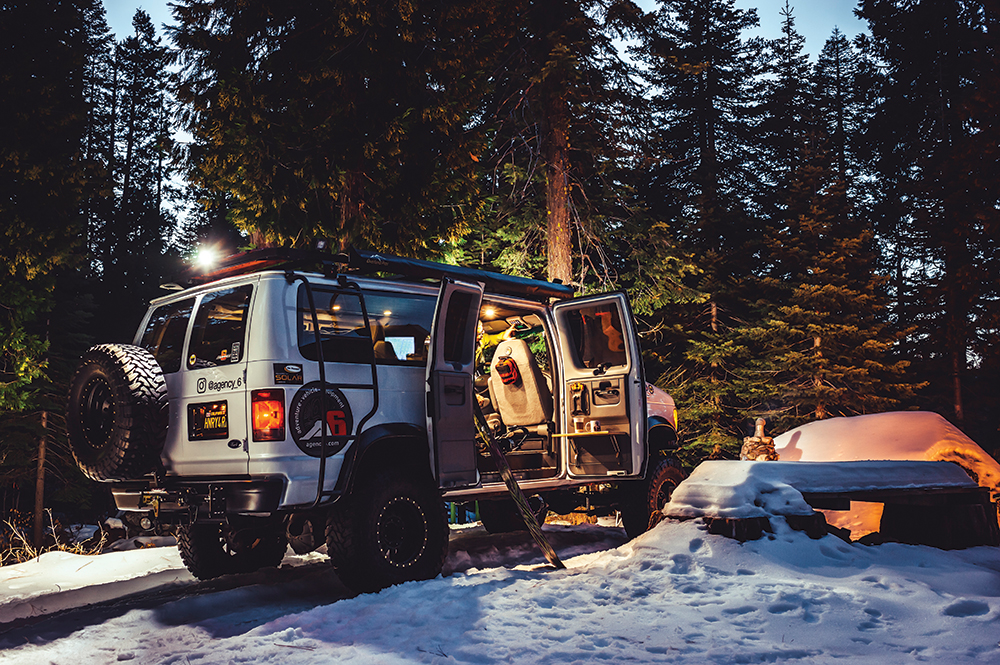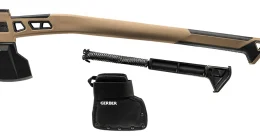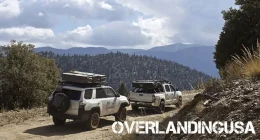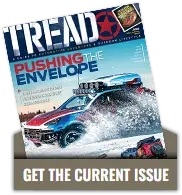THE REBELLE RALLY: America’s 1st Female-Only Off-Road Adventure
The Rebelle Rally is peculiar amongst off-road motorsports
For starters, as America’s longest off-road REBELLE rally, traveling nearly 1,200 miles from Northern Nevada to within a stone’s throw of the Mexican border, it is open exclusively to female competitors. It’s also a multi-stage, multi-day navigation rally—putting it more in line with the infamous Dakar Rally than the Baja 1000. Did we mention there’s no GPS? These women, called “Rebelles,” navigate old school, with map and compass.
How It Works
Most importantly, competitors aren’t just tasked with navigating the rally course (their phones, and anything with a GPS—including some cameras—are sealed at the start); they’re tasked with completing and finding a series of checkpoints with map and compass. Some of these are marked, called “green” checkpoints, while some of them have few markings—known as “blue” checkpoints. The most difficult were the “black” checkpoints, which contained no markings at all.
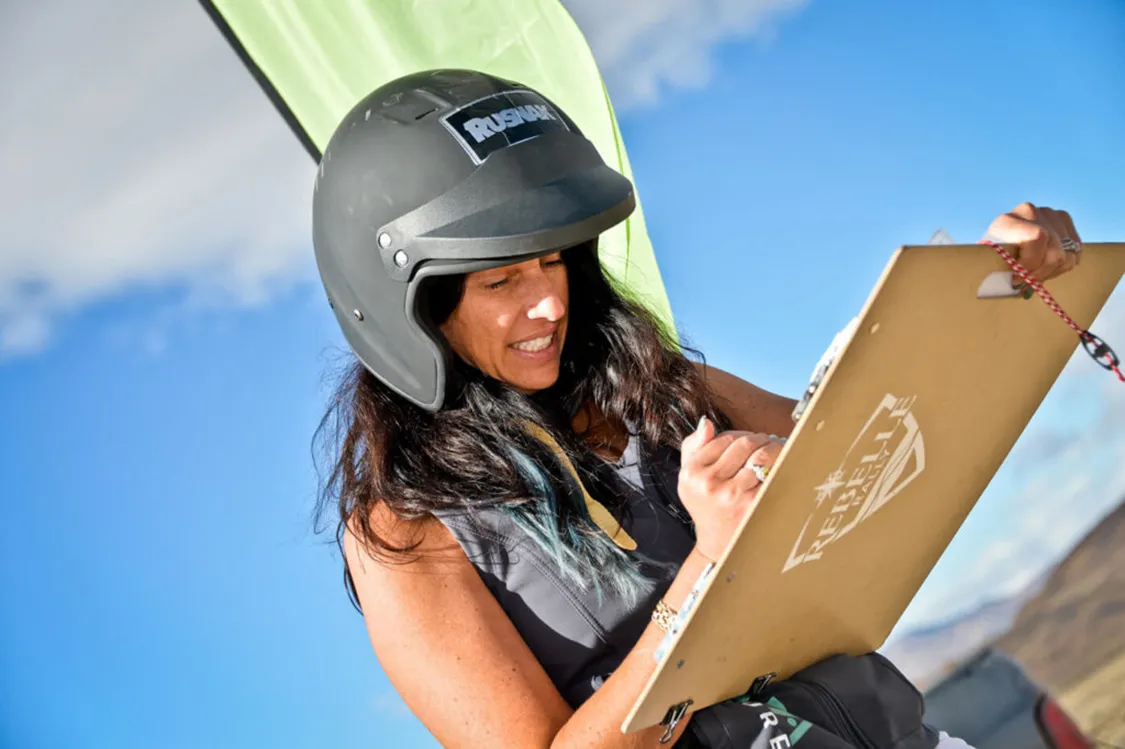
The Rebelle Rally is the only off-road event in America where, to win, you have to get out of the vehicle, understand your surroundings, and make an accurate decision that you are, in fact, at the checkpoint. It also puts competitors in closer contact with nature, allowing them to explore places that would be impractical to get to without a capable vehicle.
There are two vehicle classes that, more or less, follow the same course—the largest and most contended, 4X4—and crossover, which bypasses the more technical off-road sections.
IT QUICKLY BECAME APPARENT THAT THE DRIVER PROBABLY HAD THE EASIER JOB, FOR THE RALLY WAS WON OR LOST BY THE SKILL OF THE NAVIGATION— OF THE NAVIGATION— OF THE NAVIGATION THOUGH IT CERTAINLY DOESN’T HURT TO HAVE —THOUGH IT CERTAINLY DOESN’T HURT TO HAVE — SOME OFF-ROAD DRIVING EXPERIENCE.
Competitors are given a satellite phone as an emergency safety precaution, and their vehicles are each fitted with a tracker, which allows those at home, as well as fans watching online, to follow the progress of the event. They’re also given a handheld tracker containing two important buttons—one for S.O.S., and another to press when the team has arrived at a checkpoint.
Teams are required to be within a specified distance from the checkpoints, usually between 50 to 100 meters; if the competitors are further than that, it does not count, and they do not acquire those points. It’s an incredible feat to take what begins as checkpoint data, in latitude and longitude format, and actually turn it into a location you’re standing at—or think you’re standing at, in the middle of absolute nowhere. Teams typically have one woman in charge of driving, while the other is in-charge of navigation.
It quickly became apparent that the driver probably had the easier job, for the rally was won or lost by the skill of the navigation— though it certainly doesn’t hurt to have some off-road driving experience. “It’s pretty typical for the navigator to be taking care of the driver, but we planned the entire time that it was the driver who needed to take care of the navigator; the less Kaleigh had to deal with, the better we could perform as a team,” said competitor Charlene Bower, who went on to win the event.
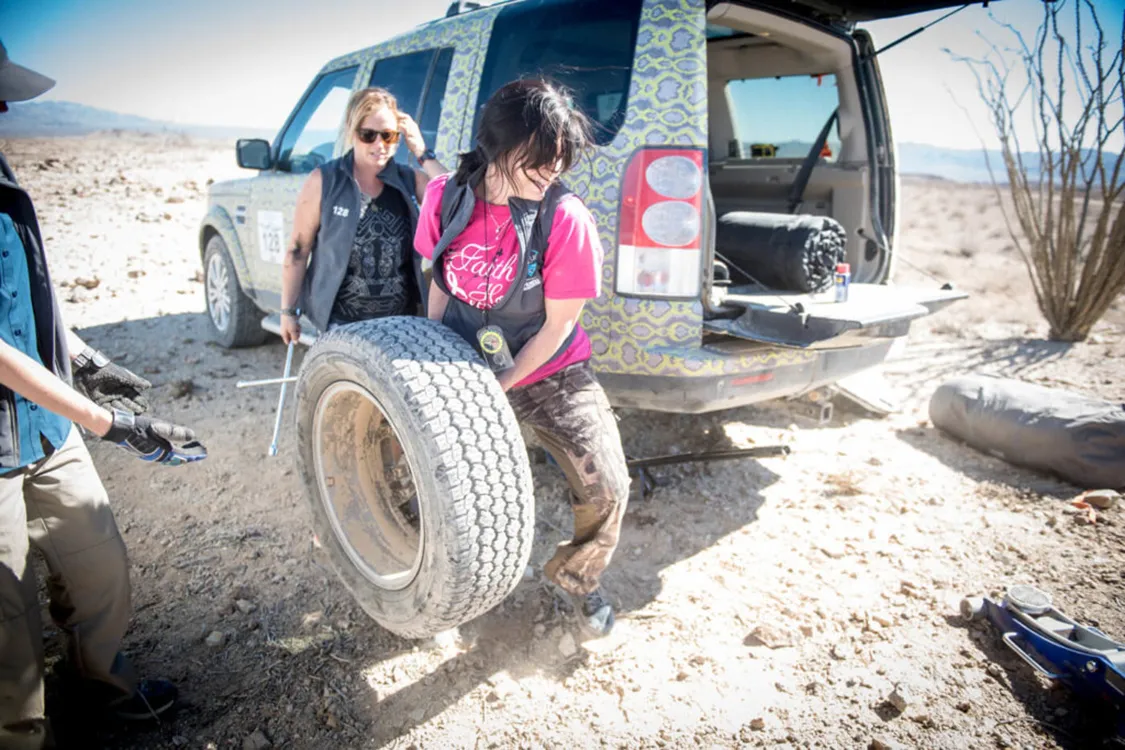
Not a Walk in the Park
Along with two other off-road journalists, we were pretty lucky to have the opportunity to chase the Rebelle, driving the course alongside 33 teams from all over the world. Having covered my fair share of off-road adventures to parts unknown, I know a thing or two about navigation. That being said, I even missed a few turns, despite being equipped with a GPS.
While the Rebelle competes on approved, official roads and trails, it doesn’t mean that those roads get used frequently. Some trails were overgrown, and with recent rains, it wasn’t always clear where to find them.
Navigating the course with a map and a compass would be hard enough, but locating these checkpoints—particularly the “black,” unmarked points—would make anyone pull their hair out.
My respect for these women grew day by day. I had it easy—and I was exhausted. The competitors were up before the sun rose, and many times, returned after sunset—only to repeat the process of dragging their gear from the vehicle impound to the designated area for competitors to set up camp. Then, the challenge of preparing for the next day before finally trying to get some sleep.
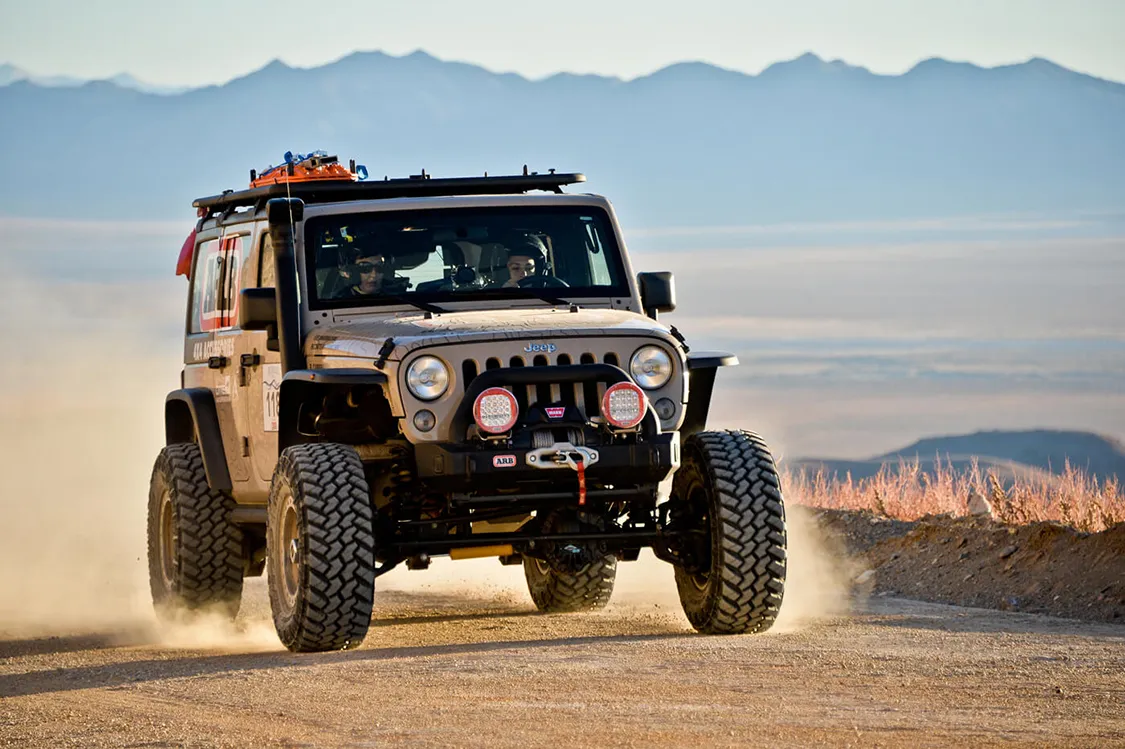
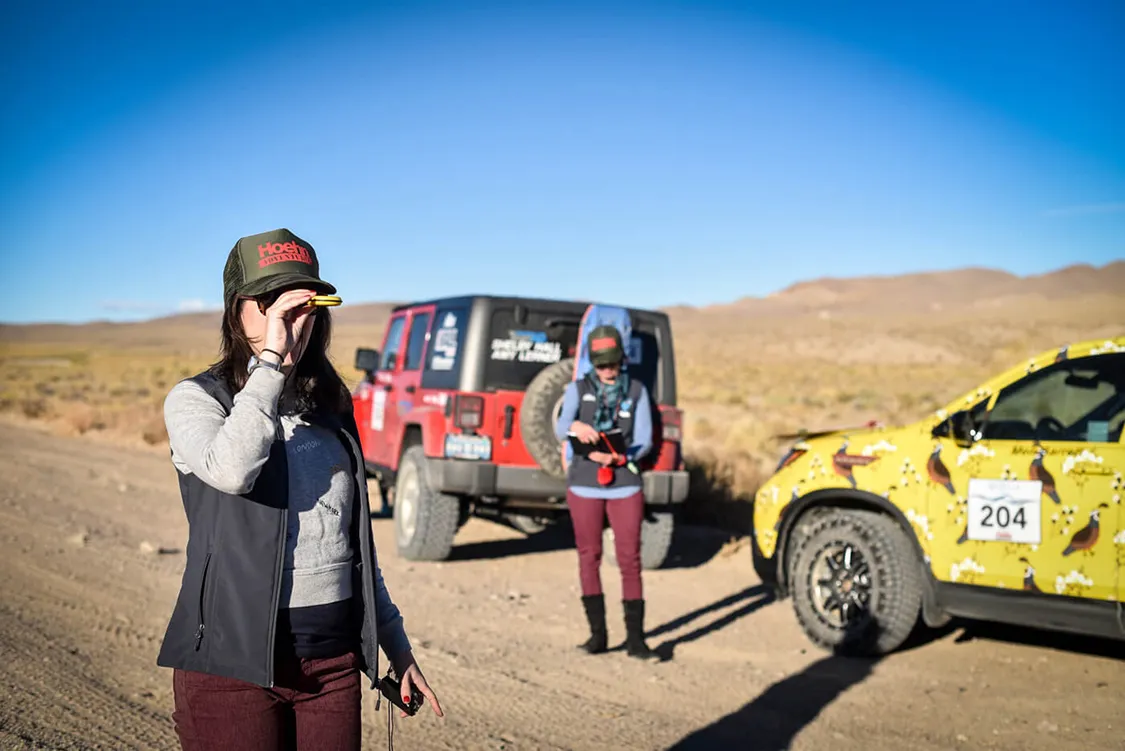
The Course
The rally course and its checkpoints offered up different challenges each day, with the difficulty of driving progressively increasing, and the checkpoints becoming more abundant and even more difficult to locate. The brainchild of Jimmy Lewis, who has won the Dakar, the Baja 1000 and the Dubai Rally— all on a motorcycle—presented competitors with a complex but fair route, which was as psychologically demanding as it was physically demanding. As each layer of the route was peeled back, new challenges were present that kept competitors on their toes.
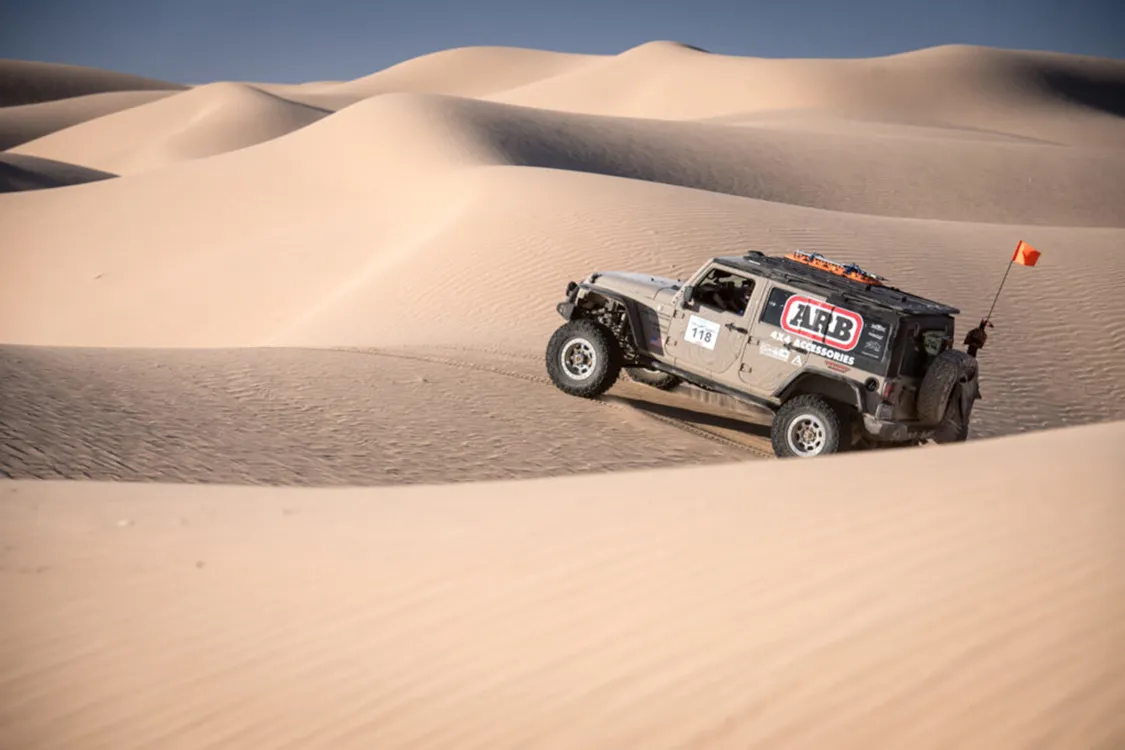
Aside from these challenges, the route was also stunningly beautiful, allowing competitors to explore seldom-seen regions of Nevada—a beautiful state, of which so many often only see the armpit: Las Vegas. Taking place on those seldom-used trails, and combining parts from other well-known rally courses, I was repeatedly taken aback by the remote scenery I was experiencing. Some sections of the course made you feel as if you’d walked into a set of Star Wars—while others put you in the middle of a Wild West ghost town that few may ever see.
ASIDE FROM THE CHALLENGE, THE ROUTE IS ALSO STUNNINGLY BEAUTIFUL, ALLOWING COMPETITORS TO EXPLORE SELDOM-SEEM REGIONS OF NEVADA, A BEAUTIFUL STATE OF WHICH SO MANY ONLY SEE THE ARMPIT: LAS VEGAS.
I particularly remember a trail that ran through a dry river wash, a pretty typical thing on the West Coast. Washes are usually quite easy to navigate, and while they may branch off, the general rule is to follow the most-traveled path—except when they’ve recently run, leaving competitors to learn the hard way which is the correct path. We spent an hour trying to travel that section of the course—with a GPS, mind you, and, once again, it gave us an immense appreciation and respect for what the Rebelles were doing on this course, effectively blind.
It’s a reminder that the Rebelle is so much more than just a rally.
It wasn’t all tough-and-terrible, though. Each night, teams had a wonderful basecamp to return to. Sure, they may have been camping in insane winds, but it was the miracle food prepared each night by Michelin-star recipient, Chef Drew Deckman, that put a smile on everyone’s face. He dished up healthy meals that served as a pick-me-up for competitors that may not have had the best day.
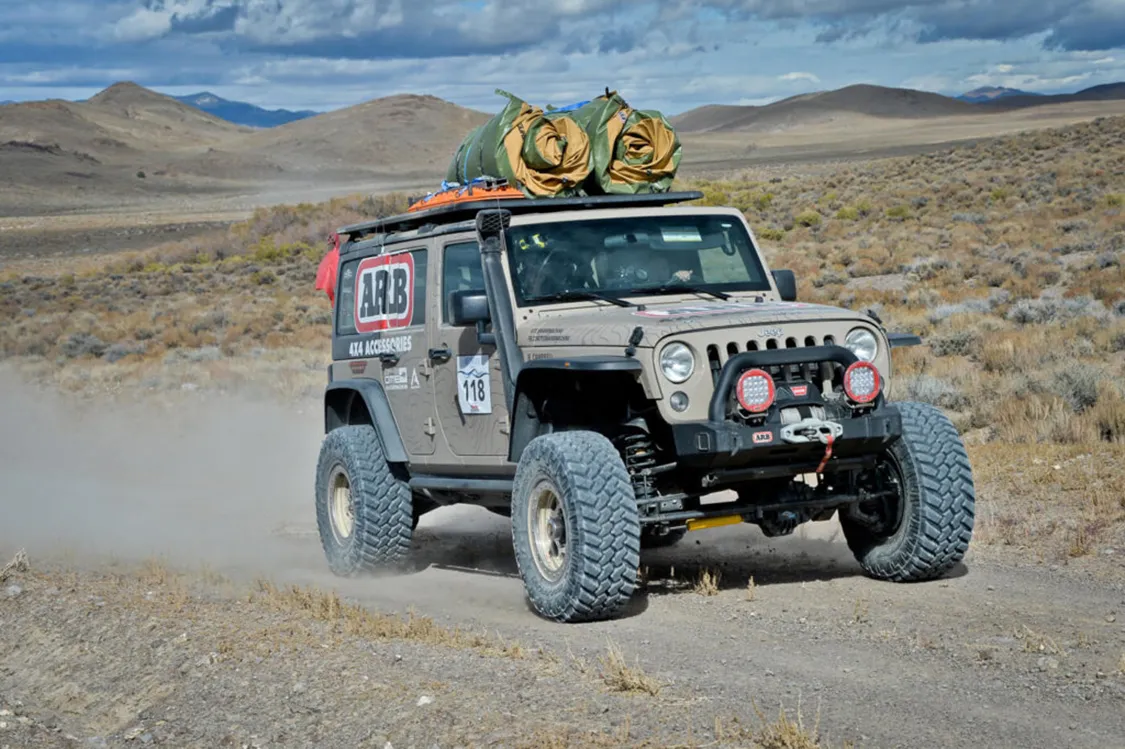
Ups and Downs
We were in the Dumont Dunes, just about ready to leave basecamp to start the fifth day of the Rebelle, when a call came over the radio that a vehicle had gone off a dune, with potential head and neck injuries. As we had a vehicle ready to roll, one of the Team 5 Foundation’s medics, Jon Wayne Taylor, commandeered our vehicle to respond as quickly as possible.
After a rush of excitement in the dunes, it was Andrea Shaffer and Michelle Davis of the aptly named Team Sugar High that crashed after an accidental launch off a dune. Now, I have to give it to these ladies—the dune they crested was a razorback, meaning it looked totally fi ne from their point of view, and then dropped off completely on the other side—and it was at least a 10-foot drop.
We counted about eight feet from the start of the dune to where their tires made first contact with the sand; they essentially dropped straight down. On impact, it bent the front axle of their rugged, modified Jeep Wrangler Rubicon, smashed their rear window, and sent Michelle’s head straight into the steering wheel, giving her a concussion.
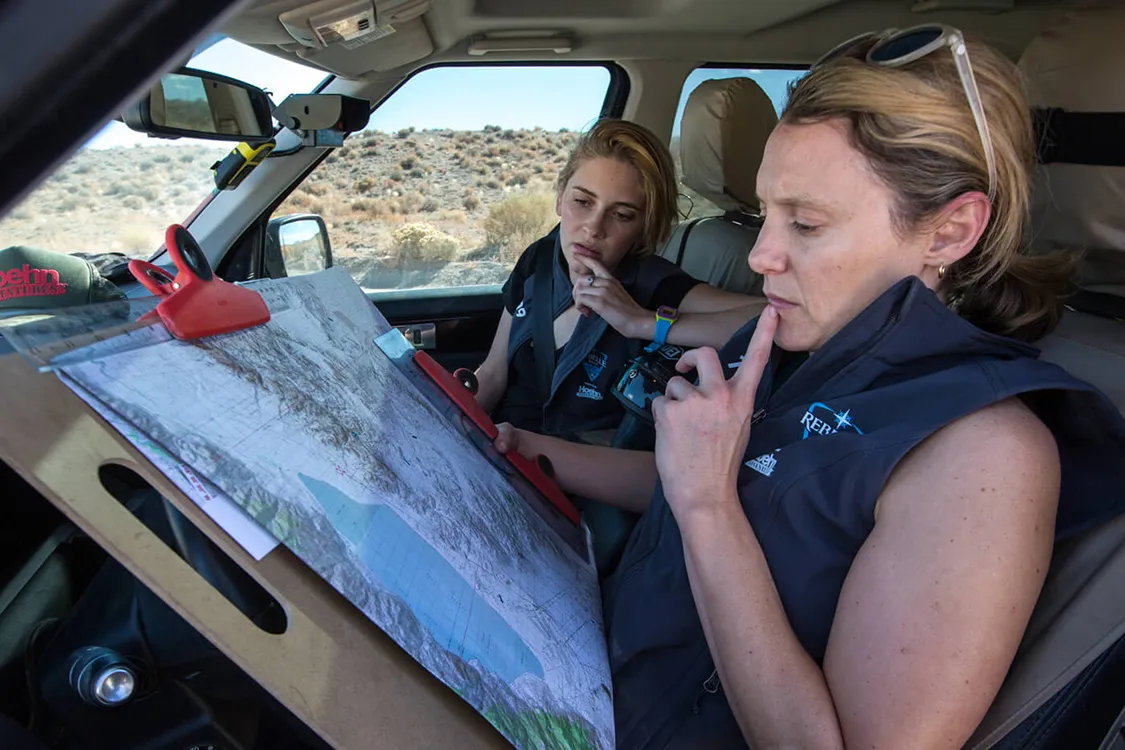
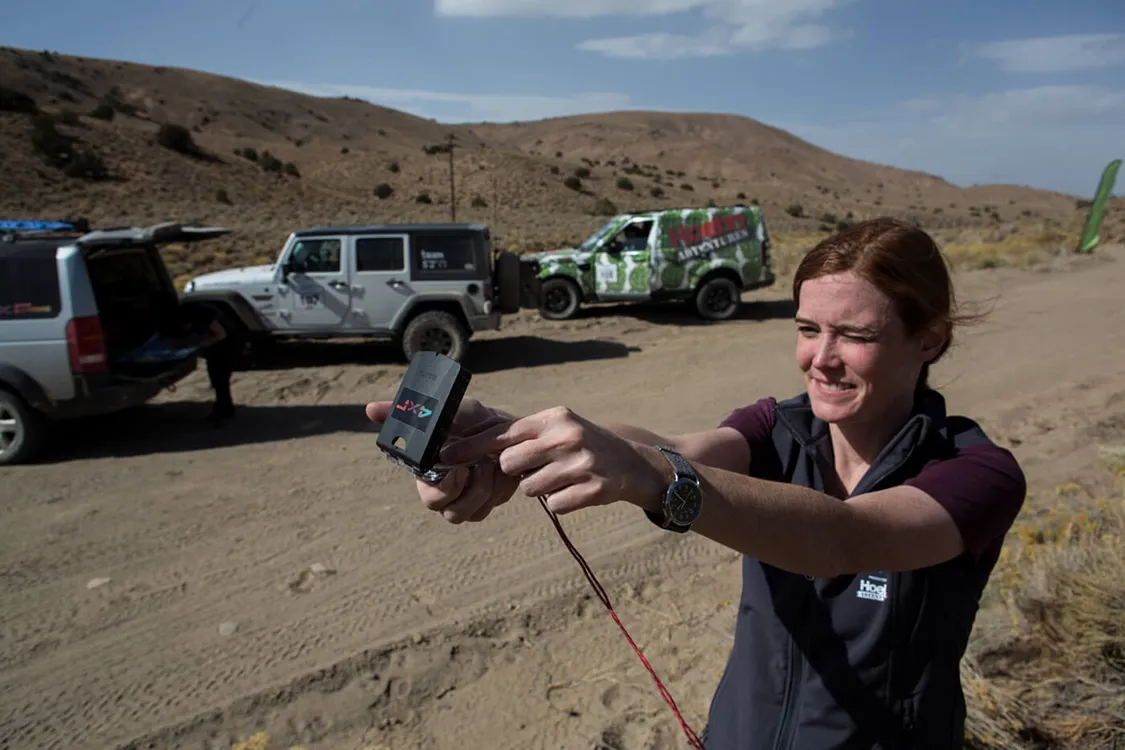
After checking that her teammate Michelle wasn’t in serious danger, just shaken up, Andrea ran the last mile to the green checkpoint—both to ensure the team got the much-needed points, and to ensure help would be on the way for her teammate—that’s dedication. Michelle was defi nitely shaken up, and had taken a good whack to the head, but Jon Wayne Taylor made sure she was alright, and then we gave her some chocolate.
NAVIGATING THE COURSE WITH A MAP AND A COMPASS WOULD BE HARD ENOUGH, BUT LOCATING THESE CHECKPOINTS—PARTICULARLY THE “BLACK” UNMARKED POINTS, WOULD MAKE ME PULL MY HAIR OUT.
Moments later, after rolling into the checkpoint, where a group of Rebelles had gathered after hearing the news about Team Sugar High, another damaged vehicle drove in: Team Squirrel Girls of Nena Barlow and Kande Jacobsen had lawn-darted their Ram Rebel off a dune. Luckily, however, they were able to repair the vehicle and finish the day, before diving into more intense repairs.
Personally, I consider Nena to be one of the finest off-road drivers in the country, and it really goes to show the unpredictable nature of the Rebelle Rally. Here, you have a team doing an event like this for the first time, making the same mistakes as a professional off-road driver. The course, rules and environment really did a great job of making this a level playing field for all of the women who entered.
The Environment Generally speaking, off-road racing doesn’t conjure images of environmental stewardship. But, Emily Miller, founder of the Rebelle Rally, wants to change that. She worked closely with the Bureau of Land Management (BLM) to ensure the rally had as minimal of an impact as possible on the environments they passed through.
Basecamps were left cleaner than when they arrived—sometimes packing up garbage bags, filled with previously-left beer cans, bottles and, most strangely, copious amounts of balloons. A reminder that when little Jonny lets his birthday balloon free to the sky, it often ends up in the pristine, remote and otherwise untouched areas, like those the Rebelle passed through in Nevada.
In sensitive areas of the Mojave, which are home to the Desert Tortoise, biologists were brought on to ensure the threatened species wasn’t placed in harm’s way—even if it meant holding up the rally. At one stage, a large chunk of the competitors were delayed by almost an hour, as a Desert Tortoise, slowly but surely, crossed the course. Regulations set forth by the BLM stated that the animal couldn’t be moved unless it was in grave danger, and that it had to progress on it’s own accord—competitors couldn’t pass until it was 100 feet from the road.
“I didn’t even know the Desert Tortoise was threatened,” said Rhonda Cahill, navigator for the X-Elles, a team of two Montana moms that have done similar events in Morocco. “But it really opened our eyes to how sensitive these environments are, and how unique of a species it is—though we were lucky to pass through just before the tortoise blocked the trail.”
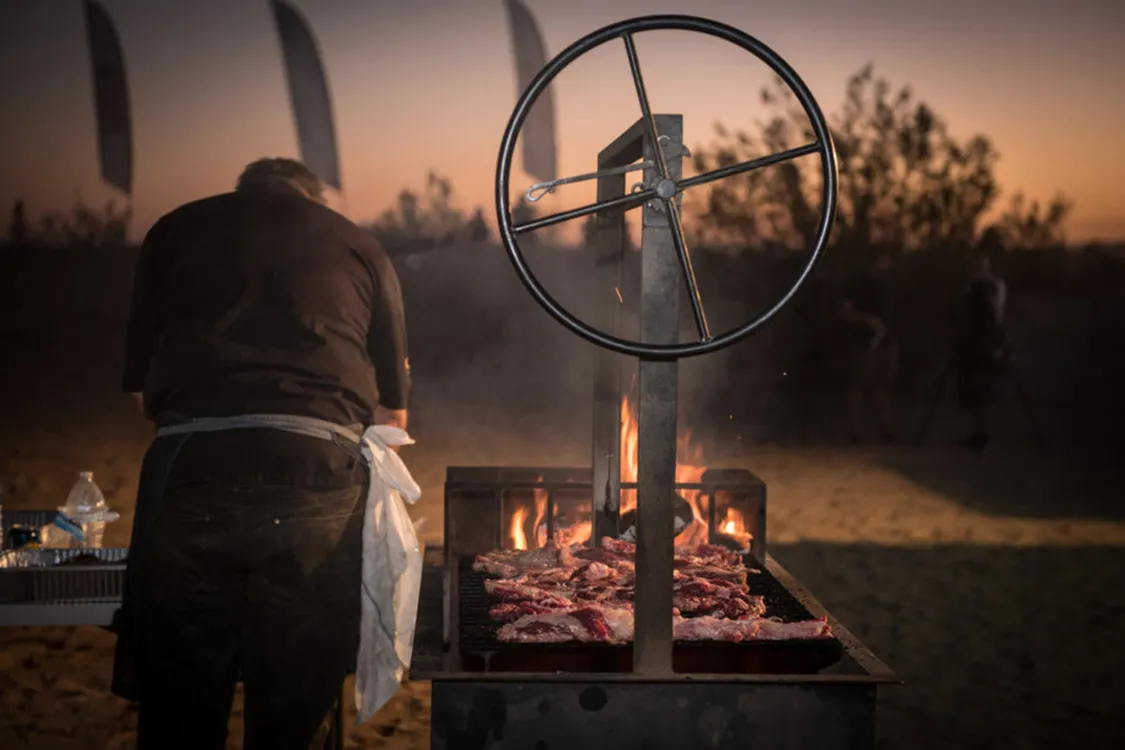
Down to the Wire
The first-ever Rebelle Rally came down to the wire, with final results constantly changing until the very last moment. In the end, Charlene Bower and Kaleigh Hotchkiss of Team Ladies Co-Driver Challenge won the event by a small margin, picking up much-needed points in the last day of competition, at the Glamis sand dunes.
“The Rebelle Rally felt like it was too big to win, so we went in with the mindset of just doing the best we could, and without owning a compass more than six months ago, we ended up at the finish line with the win. Now, I believe that every woman has the opportunity to learn and be successful at this event, thanks to the way it’s organized,” said Bower, who works with several well-known off-road brands as a marketing specialist, and had the connections to make this happen.
Hotchkiss, a CFO at a hospital, who had started four-wheeling as a hobby during college, had also never picked up a compass before she won Bower’s Ladies Co-Driver Challenge, a nationwide search designed to get women active in off-road motorsports.
“We weren’t perfect; we missed some of the hard, black checkpoints every day. We knew the event would be this tough,” Bower said. “We won the event based on commitment and our strategy, which was to watch our time, use mind over muscle, get no penalties, and listen intently to the morning briefing for key information.”
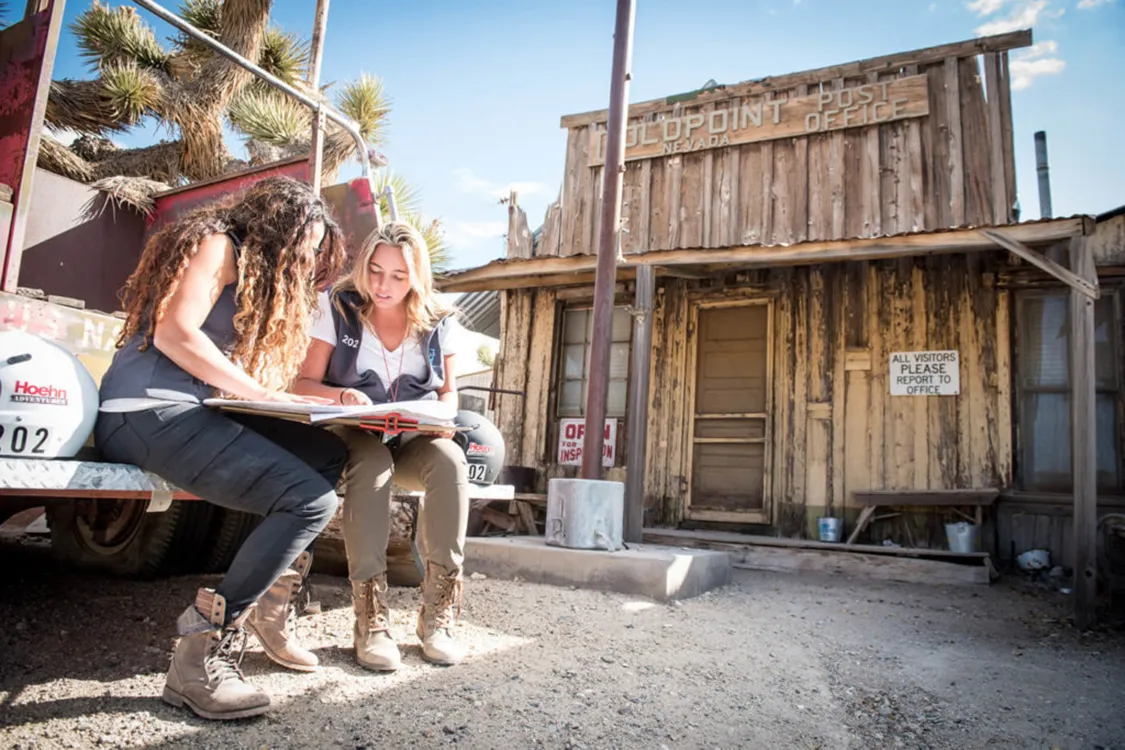
How You Can Get Involved
You don’t need to be a seasoned off -road racer to compete in the Rebelle Rally. In fact, most the competitors for the inaugural event weren’t. Registration is currently open for 4X4 and crossover vehicles alike, meaning you can bring your modifi ed Jeep, or your bone-stock Subaru, to compete. Visit Rebelle Rally at rebellerally.com.
If you’re without a vehicle, Barlow Adventures offers well-prepared rental Jeep Rubicons for the event. Also included in the entry is a series of online training sessions and recommendations designed to bring your off -road and navigation skills up a notch.
Editor’s note: A version of this article first appeared in the May-June 2017 print issue of Tread Magazine.

